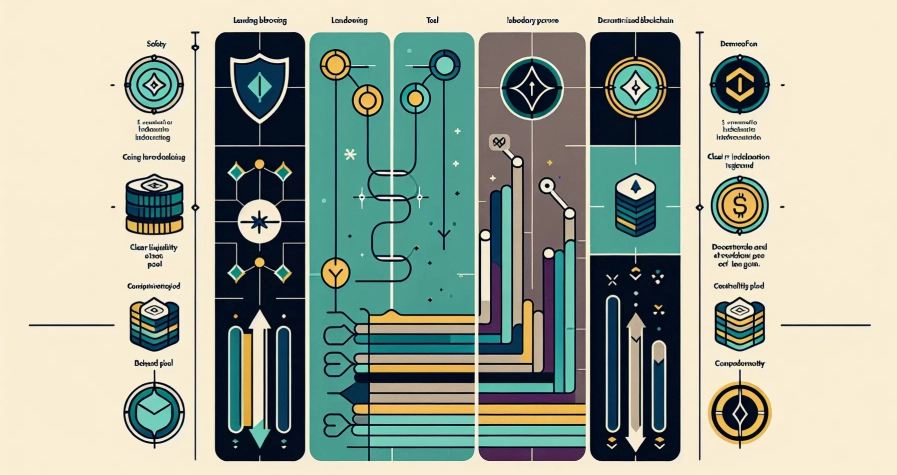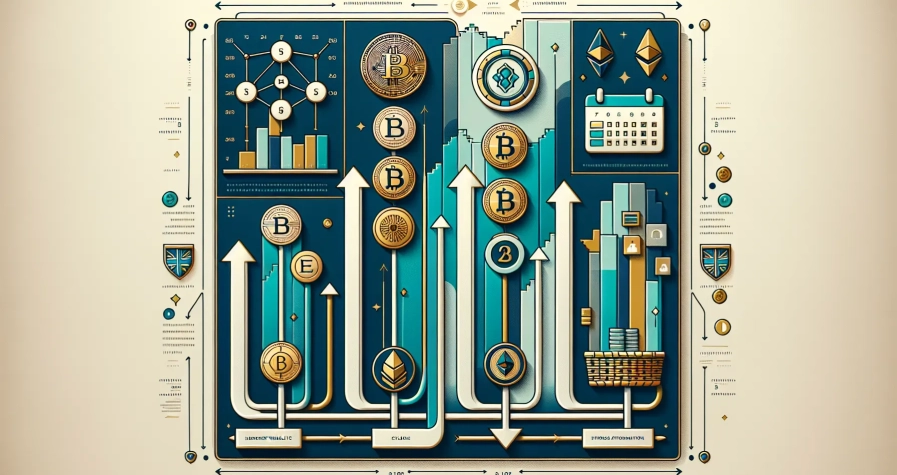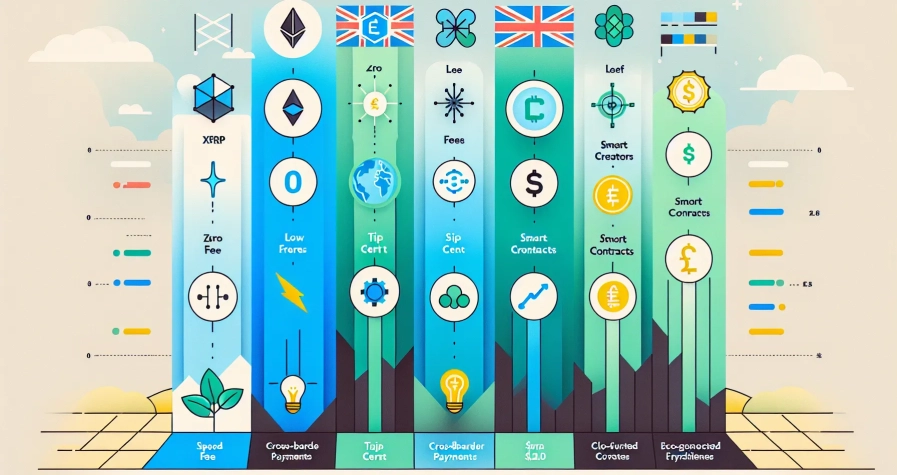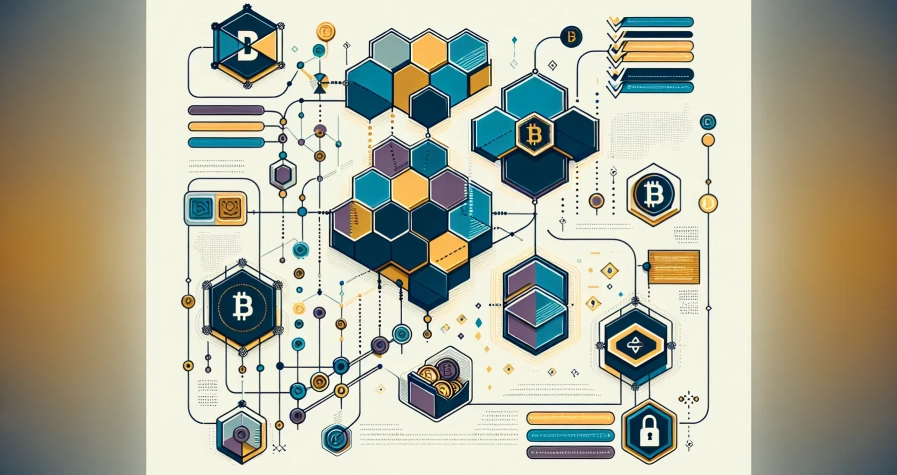The cryptocurrency market is notorious for its volatility and the sheer number of projects vying for investor attention. Whilst some offer genuine innovation and long-term value, others exist solely to exploit unsuspecting investors through elaborate scams and pump-and-dump schemes. The difference between a legitimate project and a fraudulent one can mean the difference between substantial returns and devastating losses.
Spotting a legit crypto project before committing capital requires more than simply reviewing a flashy website or reading enthusiastic social media posts. It demands rigorous due diligence across multiple dimensions, from scrutinising the team’s credentials to evaluating tokenomics, security measures, and real-world applicability. Investors who cut corners on research often find themselves holding worthless tokens from projects that never deliver on their promises.
This guide walks through the essential steps to identify legitimate cryptocurrency projects. By systematically examining key indicators and red flags, investors can significantly reduce their exposure to fraud and focus on opportunities backed by credible teams, sound fundamentals, and transparent operations.
Key Takeaways
- Spotting a legit crypto project requires rigorous due diligence across team credentials, tokenomics, security audits, and real-world applicability.
- Always verify team members’ identities and professional histories through multiple sources, as anonymous teams and fabricated credentials are common red flags in fraudulent schemes.
- A comprehensive whitepaper should clearly articulate the problem being solved, provide coherent technical explanations, and include a realistic roadmap with specific milestones.
- Legitimate projects invest in third-party security audits from reputable firms and publish open-source code that demonstrates consistent development activity.
- Assess whether the token serves genuine utility beyond speculation and scrutinise distribution models to avoid projects where insiders control the majority of supply.
- Verify claimed partnerships independently and evaluate whether the project addresses a real-world problem where blockchain technology provides meaningful advantages over traditional solutions.
Research the Team Behind the Project
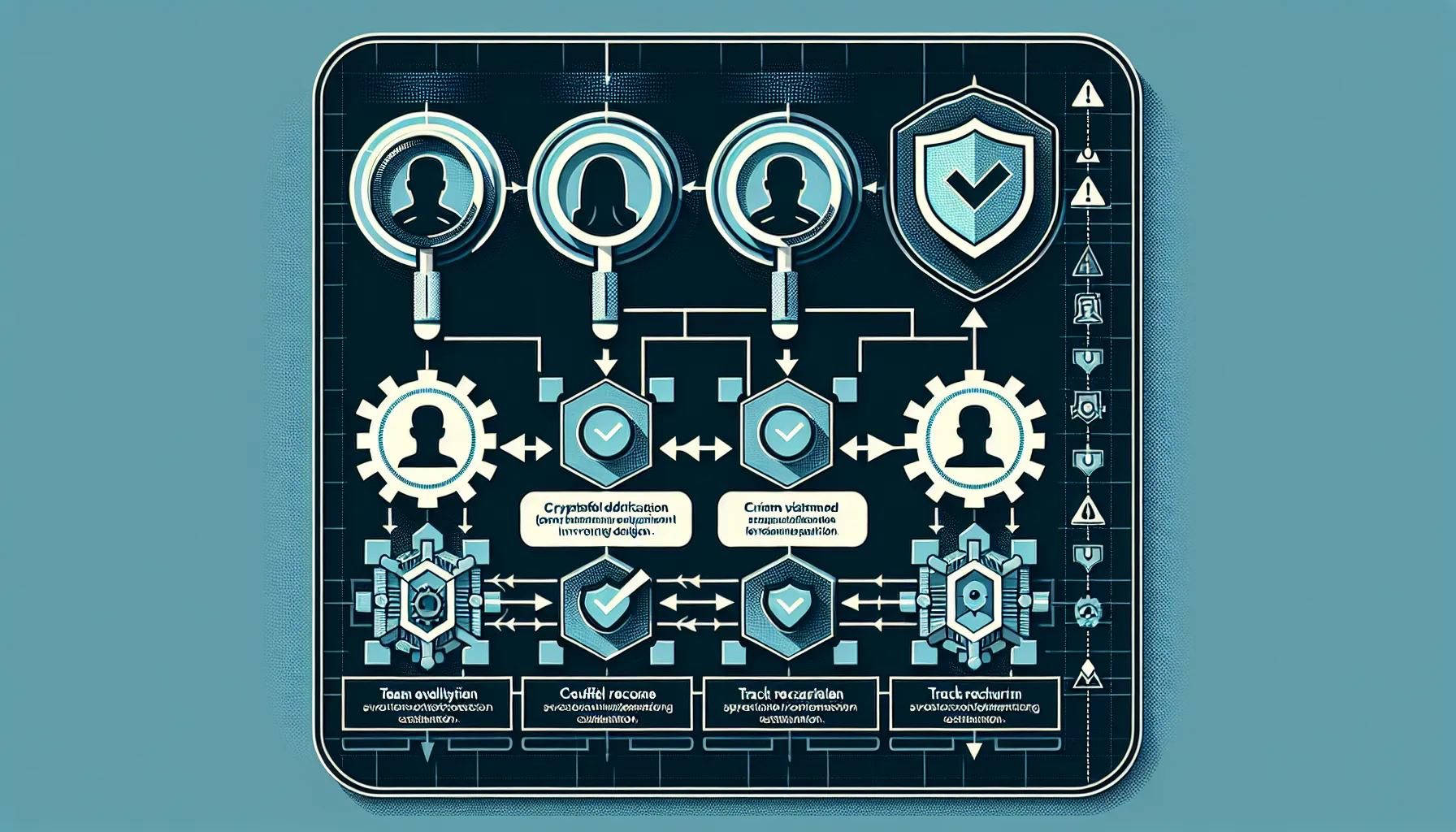
The foundation of any successful cryptocurrency project lies in the expertise and integrity of its team. A project is only as strong as the people building it, which makes investigating the team’s background an essential first step in due diligence.
Start by identifying who the core team members are. Legitimate projects prominently display their team on official websites, typically with photos, full names, and professional biographies. Anonymous or pseudonymous teams should immediately raise concerns, whilst privacy has its place in crypto culture, serious projects seeking substantial investment generally have no reason to hide the identities of their leaders.
Once identified, investors should verify each team member’s professional history. LinkedIn is particularly useful for confirming employment records, educational qualifications, and previous blockchain involvement. Look for a track record of relevant experience in technology, finance, or the blockchain industry specifically. Have team members launched successful products before? Do they have demonstrable expertise in the technical areas the project claims to address?
Beware of fabricated credentials. Unfortunately, some fraudulent projects create fake LinkedIn profiles or exaggerate accomplishments. Cross-reference information across multiple sources, check for genuine endorsements from other professionals, and search for interviews or conference appearances that confirm the person’s involvement in the industry.
Verify Team Credentials and Track Record
Beyond confirming that team members exist, it’s crucial to evaluate the quality and relevance of their credentials. A PhD in computer science or years of experience at reputable tech companies adds genuine credibility. Conversely, vague descriptions like “blockchain enthusiast” or “crypto expert” without substantiating evidence should trigger scepticism.
Investigate whether any team members have been involved in previous failed projects or, worse, fraudulent schemes. A simple internet search combining the person’s name with terms like “scam” or “controversy” can reveal problematic histories. Whilst past failure doesn’t automatically disqualify someone, many successful entrepreneurs have experienced setbacks, patterns of abandoned projects or investor complaints warrant serious concern.
Look for independent verification of achievements. If a team member claims to have worked at a prestigious company or contributed to a well-known blockchain project, reach out through professional networks or check the official project’s contributor lists. Legitimate professionals typically have verifiable digital footprints spanning years, including GitHub contributions, published papers, or speaking engagements at industry events.
Finally, assess whether the team’s skills align with the project’s stated goals. A DeFi protocol requires deep expertise in smart contract development and financial engineering. A layer-one blockchain needs experienced distributed systems architects. If the team lacks the specific technical competencies their roadmap demands, even well-intentioned projects may fail to deliver.
Evaluate the Project’s Whitepaper and Roadmap
A project’s whitepaper serves as its foundational document, outlining the problem it aims to solve, the technical approach, tokenomics, and strategic vision. Legitimate projects invest considerable effort into producing comprehensive, well-researched whitepapers that stand up to scrutiny.
When reviewing a whitepaper, first check whether it clearly articulates the problem being addressed. Vague statements about “revolutionising finance” or “disrupting industries” without specific details are red flags. A credible whitepaper identifies concrete pain points and explains precisely how the project’s technology provides a solution.
Examine the technical explanations for depth and coherence. Whilst not every investor possesses deep technical knowledge, a well-written whitepaper should make its core concepts understandable to an informed reader. Excessive jargon used to obscure rather than explain, or unrealistic claims about technological capabilities, often indicate either incompetence or intentional deception.
The roadmap provides insight into the project’s planning and execution strategy. Look for specific milestones with realistic timeframes. Projects promising full platform launches within weeks or making guarantees about token price performance should be viewed with extreme suspicion. Development takes time, particularly in blockchain where security and testing are paramount.
Credible roadmaps also demonstrate adaptive planning. The crypto landscape evolves rapidly, and rigid adherence to outdated plans suggests inflexibility. Check whether the team updates its roadmap based on market feedback, technological developments, or changing regulatory environments.
Assess the Technical Documentation Quality
Beyond the whitepaper, legitimate projects provide additional technical documentation that demonstrates genuine development activity and transparency. This includes developer guides, API documentation, architecture diagrams, and protocol specifications.
Technical documents should be publicly accessible and regularly updated. Projects that hide documentation behind registration walls or provide only superficial overviews may have something to conceal, or worse, nothing substantive to share.
For projects claiming technical innovation, look for published code repositories on platforms like GitHub. Open-source projects allow anyone to review the actual codebase, which provides the highest level of transparency. Check the repository’s commit history, consistent, meaningful commits from multiple contributors indicate active development. In contrast, repositories with minimal activity, copy-pasted code, or last-minute bulk uploads before a token launch suggest superficial development efforts.
Even if an investor lacks programming skills, certain indicators are accessible to everyone. Does the repository have documentation files (README, installation guides)? Are there issues being actively discussed and resolved? Do outside developers contribute or fork the code? These signs point to a genuine technical project rather than vaporware.
Finally, compare the technical documentation to the whitepaper’s promises. If the whitepaper describes advanced features that aren’t reflected in the codebase or technical specs, the project may be overselling its current capabilities or progress.
Examine the Tokenomics and Distribution Model
Tokenomics, the economic model governing a project’s token, fundamentally influences both the project’s viability and investor returns. Poor tokenomics can doom even technically sound projects, whilst predatory distribution models often signal scams.
Start by understanding the token’s utility within the ecosystem. Does it serve a genuine purpose beyond speculation? Legitimate utility includes governance rights, access to platform services, staking rewards, or transaction fee payments. Tokens without clear utility are essentially speculative assets whose value depends entirely on market sentiment.
Examine the total supply and distribution schedule. How many tokens exist? How many are in circulation versus locked or held by the team? Projects where the team, insiders, or early investors control the vast majority of tokens create significant risks. These holders can manipulate prices through coordinated selling or artificially constrain supply.
Look for transparent vesting schedules that align team incentives with long-term project success. Teams that unlock their tokens immediately after launch can dump on retail investors, whilst vesting periods of several years demonstrate commitment. Similarly, assess how tokens allocated for community rewards, development, or partnerships will be released over time.
Inflationary versus deflationary mechanisms also matter. Some projects mint new tokens indefinitely, which can devalue existing holdings. Others carry out burn mechanisms or capped supplies. Neither approach is inherently superior, but investors should understand how token supply will evolve and what that means for their holdings.
Scrutinise the initial distribution method. Fair launches, public sales with reasonable caps, and broad distribution reduce concentration risks. In contrast, projects where insiders receive massive allocations at tiny fractions of the public sale price create obvious conflicts of interest.
Finally, be wary of excessive complexity in tokenomics. Legitimate projects can explain their economic model clearly. Convoluted structures with multiple token types, obscure reward mechanisms, or byzantine distribution formulas may be designed to confuse rather than to serve genuine economic purposes.
Analyse Community Engagement and Social Presence
A project’s community provides valuable insights into its legitimacy, development progress, and investor sentiment. Whilst social media presence can be manufactured, certain qualitative factors distinguish genuine communities from artificial ones.
Legitimate projects cultivate engaged communities across platforms like Twitter, Telegram, Discord, and Reddit. Community members ask substantive questions about technology, roadmap progress, and partnerships. Discussions demonstrate diverse perspectives rather than uniform cheerleading. Critical questions receive thoughtful responses from team members or knowledgeable community managers.
In contrast, suspicious communities exhibit several warning signs. Channels filled with rocket emojis, “wen moon” comments, and aggressive price speculation with little technical discussion suggest a pump-and-dump scheme. Instant bans or deletions for anyone asking difficult questions indicate the team fears scrutiny. Armies of newly created accounts posting identical promotional messages point to bot networks rather than organic interest.
Examine how the team interacts with its community. Credible teams maintain regular communication through updates, AMAs (Ask Me Anything sessions), and development progress reports. They address concerns transparently and acknowledge when things don’t go according to plan. Teams that disappear for weeks, ignore direct questions, or respond defensively to criticism lack the professionalism serious projects require.
Community size should also be evaluated contextually. A project with millions of social media followers but minimal substantive engagement likely purchased fake followers. Conversely, smaller communities with highly engaged, technically knowledgeable members often indicate genuine early-stage projects.
Check for community-generated content beyond official channels. Do independent YouTubers, bloggers, or podcast hosts discuss the project? Are developers building tools or applications on the platform? Third-party interest signals that the project has captured genuine attention beyond its own marketing efforts.
Finally, monitor sentiment over time. Communities around legitimate projects experience natural fluctuations, enthusiasm during successful launches, frustration during delays, constructive criticism about features. Artificially positive sentiment that never wavers, even when obvious problems arise, suggests a community managed through censorship and manipulation rather than authentic engagement.
Check for Red Flags and Warning Signs
Beyond positive indicators of legitimacy, investors must actively watch for red flags that signal potential fraud or high-risk projects. Recognising these warning signs can prevent costly mistakes.
Unrealistic return promises represent perhaps the most obvious red flag. Any project guaranteeing specific returns, particularly those promising double or triple-digit gains within short timeframes, should be immediately suspect. Legitimate projects cannot and will not guarantee investment returns due to market unpredictability and regulatory constraints.
Anonymous teams, as previously mentioned, warrant extreme caution. Whilst some argue anonymity protects developers from regulatory overreach, it also provides perfect cover for scammers who can vanish without consequence. The few legitimate projects with anonymous teams typically have years of proven development and community trust, something new projects cannot claim.
Claimed partnerships require verification. Scam projects frequently list major companies as partners without any actual relationship. Visit the supposed partner’s official website and social media, do they acknowledge the partnership? Search for joint press releases or announcements from both parties. If you can’t find independent verification, the partnership is likely fabricated.
Aggressive, relentless marketing campaigns, particularly those offering bonuses for immediate investment, create artificial urgency to prevent careful due diligence. Legitimate projects market themselves but don’t pressure investors into hasty decisions. Be especially wary of unsolicited messages on social media or emails promising exclusive investment opportunities.
Plagiarised whitepapers or websites copied from other projects indicate either complete fraud or astonishing incompetence. Simple searches of key whitepaper phrases can reveal whether content has been stolen. Similarly, reverse image searches can expose whether team photos are stock images or stolen from other websites.
Lack of transparency about fundamental aspects like team identity, token distribution, or code repositories should disqualify projects from consideration. Legitimate projects embrace transparency as it builds trust: only those with something to hide resist disclosure.
Check cryptocurrency scam databases and forums for reports about the project or team members. Resources like CryptoScamDB, BadBitcoin, and community forums on Reddit often catalogue known scams and suspicious projects. Even a few credible complaints warrant investigation.
Finally, trust your instincts. If something feels off, whether it’s evasive answers to direct questions, inconsistencies in the project narrative, or simply a nagging sense that promises seem too good, step back and conduct additional research. The crypto space rewards patient, thorough investors far more than impulsive ones.
Review Security Audits and Code Transparency
Security represents a critical consideration for any blockchain project, particularly those handling user funds through smart contracts or decentralised applications. Professional security audits and code transparency provide essential assurance that a project has been properly vetted.
Reputable third-party security firms like CertiK, Hacken, Quantstamp, and Trail of Bits conduct comprehensive audits of smart contract code and blockchain protocols. These audits identify vulnerabilities, coding errors, and potential attack vectors before they can be exploited. Legitimate projects invest in these audits and publish the results publicly.
When reviewing audit reports, don’t simply check whether one exists, examine the findings. Even credible projects may have issues identified during audits: what matters is whether the team addressed the concerns. Look for follow-up audits or statements confirming that critical and high-severity issues were resolved.
Be wary of audit claims that can’t be verified. Some projects claim to be “audited” without naming the firm or providing accessible reports. Others create fake audit reports or pay for superficial reviews from unknown entities. Always verify that the audit comes from a recognised firm and visit that firm’s website to confirm the audit’s authenticity.
Code transparency extends beyond audits. Open-source projects that publish their code on GitHub or similar platforms allow anyone, including security researchers and developers, to review the implementation. This crowd-sourced scrutiny often catches issues that even professional audits might miss.
For projects claiming to use established protocols or frameworks, verify those claims by reviewing the code. A project that says it’s built on Ethereum but whose GitHub reveals something entirely different is obviously misrepresenting itself.
Examine the project’s response to past security incidents, if any. Have there been exploits or vulnerabilities? How did the team respond? Transparent communication, swift action to protect users, and implementing fixes demonstrate professionalism. Projects that downplay security incidents, blame users, or fail to compensate affected parties reveal problematic governance.
Consider whether the project’s security practices match industry standards for its type. DeFi protocols should have multi-signature wallets, time-locks on critical functions, and bug bounty programmes. Layer-one blockchains need formal verification of consensus mechanisms and extensive testnet periods. Projects cutting corners on security pose unacceptable risks regardless of other positive factors.
Assess Real-World Use Cases and Partnerships
Technical sophistication and professional teams mean little if a project solves no real-world problem or serves no genuine demand. Evaluating use cases and partnerships helps determine whether a project has practical value beyond speculation.
Start by asking what specific problem the project addresses. The best blockchain projects identify inefficiencies, access barriers, or trust issues in existing systems and offer clear improvements. For example, supply chain tracking on blockchain provides transparency and immutability that traditional databases can’t guarantee. Cross-border payment solutions can reduce costs and transaction times compared to conventional banking.
Scrutinise whether blockchain technology actually provides the best solution. Many projects apply blockchain to problems better solved through traditional databases or existing infrastructure. Blockchain’s unique value lies in decentralisation, immutability, and trustless systems, if these features aren’t essential to the use case, the project may be using blockchain as a marketing buzzword.
Evaluate whether anyone is actually using the product. Testnets and prototypes are fine for early-stage projects, but mature projects should demonstrate adoption. Check transaction volumes, active addresses, and user growth metrics. Projects with impressive whitepapers but no measurable usage may never achieve product-market fit.
Partnerships can validate a project’s relevance and credibility, but only if they’re genuine and substantial. As mentioned earlier, verify partnerships through multiple sources. Beyond verification, assess the partnership’s significance. A vague “collaboration” or “integration” means far less than active commercial relationships where the partner’s business actually depends on the project’s technology.
Look for partnerships with entities that have reputations to protect. Established corporations, recognised institutions, and regulated businesses conduct their own due diligence before associating with blockchain projects. Their involvement, if genuine, provides a degree of external validation.
Be cautious of partnerships that seem disproportionately impressive for the project’s stage. A brand-new project with minimal development claiming Fortune 500 partnerships is almost certainly misrepresenting casual conversations as formal relationships.
Evaluate the competitive landscape. Does the project offer advantages over existing solutions? What’s its unique value proposition? Markets with dozens of similar projects require particularly strong differentiation. Understanding where a project fits within its competitive environment helps assess its long-term viability.
Finally, consider regulatory alignment. Projects operating in legal grey areas face significant risks regardless of their technical merits. Those working within regulatory frameworks or actively engaging with regulators demonstrate maturity and sustainability.
Conclusion
Identifying legitimate cryptocurrency projects requires systematic research across multiple dimensions, none of which individually guarantees success, but together paint a comprehensive picture of a project’s credibility and potential. Investors who methodically evaluate teams, documentation, tokenomics, community dynamics, security measures, and real-world applicability significantly reduce their exposure to fraud and poor investments.
The cryptocurrency market’s rapid evolution and global accessibility create extraordinary opportunities, but these same characteristics enable sophisticated scams and poorly conceived projects to proliferate. There are no shortcuts to proper due diligence. The hours spent researching a project before investing will always prove more valuable than the regret of capital lost to scams or failed ventures.
Approach every investment opportunity with healthy scepticism, regardless of how compelling the marketing or how enthusiastic the community appears. Verify claims independently, demand transparency, and never invest more than one can afford to lose. The most successful crypto investors aren’t those who chase every trend, but those who patiently identify genuinely innovative projects backed by credible teams and sound fundamentals.
As the blockchain industry matures, the gap between legitimate projects and opportunistic scams will likely become more apparent. Regulatory frameworks will evolve, industry standards will strengthen, and professional due diligence will become increasingly accessible. Until then, individual investors must serve as their own gatekeepers, applying rigorous analysis before committing capital to any crypto project.
Frequently Asked Questions
How can I verify if a crypto project team is legitimate?
Start by checking if team members are publicly identified with full names and professional biographies. Verify their credentials through LinkedIn, search for their previous work experience, and look for GitHub contributions or conference appearances. Cross-reference information across multiple sources to confirm authenticity and relevant blockchain expertise.
What are the biggest red flags when evaluating a crypto project before investing?
Major warning signs include anonymous teams, guaranteed return promises, unverifiable partnerships, aggressive marketing pressure, plagiarised whitepapers, and lack of code transparency. Projects with poor tokenomics where insiders control most tokens or those deleting critical questions from community channels should be avoided entirely.
Why is a security audit important for cryptocurrency projects?
Security audits from reputable firms like CertiK or Quantstamp identify vulnerabilities in smart contracts before they can be exploited. These audits protect investor funds and demonstrate the team’s commitment to security. Always verify that audit reports are genuine, publicly accessible, and that critical issues were properly resolved.
What should good tokenomics look like in a crypto project?
Legitimate tokenomics include clear utility beyond speculation, transparent distribution schedules, team token vesting over several years, and reasonable supply mechanisms. Avoid projects where insiders control the vast majority of tokens or where the economic model is unnecessarily complex and difficult to understand.
How long does proper due diligence take before investing in crypto?
Thorough due diligence typically requires several hours to days, depending on project complexity. You should research the team background, analyse the whitepaper and code repositories, verify partnerships, review audit reports, and assess community engagement. Rushing this process significantly increases your risk of fraud or poor investment decisions.
Can a crypto project with an anonymous team still be trustworthy?
Whilst a few established projects like Bitcoin have anonymous origins, new projects with anonymous teams pose substantial risks. Without identifiable leaders, scammers can disappear without consequence. Anonymous teams are acceptable only for projects with years of proven development, transparent code, and established community trust.



